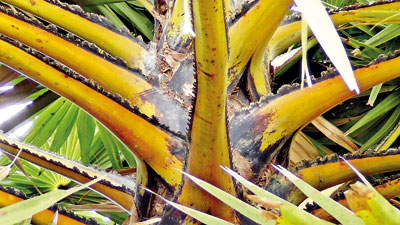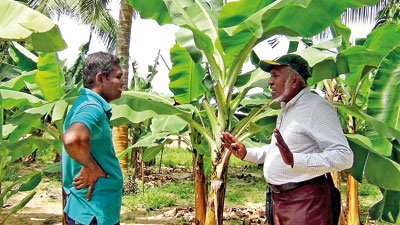News
More support needed for palmyra as elephant barriers
Hardy palmyra trees endowed with sharp, saw-tooth-like fronds and rough trunks, should get more attention in being adopted as a natural barrier against crop-raiding elephants.

Dr. M. Aziz: Advocates palmyra as a cost-effective natural barrier against crop attack by elephants
While the trees take about eight years to grow fully, their rough exterior features can be a deterrent if planted in rows in a zig-zag pattern.
Some NGOs have also suggested barriers of bee hives. Elephants are wary of bees. Researchers have played back dozens of recordings of Asian honeybees at Udawalawe National Park and noted avoidance by elephants.
As for the palmyra trees, veterinarian Dr M. Aziz, 68, believes, elephants tend to avoid the sharp-edged fronds of the palms.
He says the palmyra is a cost-effective natural solution when planted as a barrier.
“Palmyra cultivation is not costly and can be expanded,’’ he said.
Dr Aziz who lives in Vanathavillu in the Puttalam District said he had advised politicians some 20 years ago, but the idea had been rejected.
“This proposal is still valid,’’ Dr Aziz believes, based on his research and experience.
Dr Aziz says that when the trees are small they need to be protected against bandicoots and mice, but as the trees grow bigger, less maintenance is needed and they can become a barrier against elephants.
He himself has planted palmyra fences.
“I proposed this palmyra fence as a solution to the elephant problem in 1990 to Puttlam District member of parliament in 1990,” he said.
Dr Aziz started his campaign after a man named Nimal in Mailankulam lost his property in an elephant attack.
He said that a zig-zagging palmyra planting model is popular in India as a solution to the human-elephant conflict. Elephants eat the palmyra fruit but do not get close to the tree trunk because of its sharp fronds. Around 1,000 acres have been successfully cultivated in a zig zag pattern.
Dr Aziz also says the palmyra trees can provide export opportunities of related products for the famers.
“The Palmyra Development Authority has a programme for cutivation and expansion of the crop,’’ he said.
In Puttalam alone elephants have destroyed around 100,000 coconut trees and around 20,000 acres of chena cultivation. Over the past 10 years, 500 elephants have been killed and 100 human lives lost.

Elephants avoid the sharp-edged fronds of the palms, says Dr. Aziz


